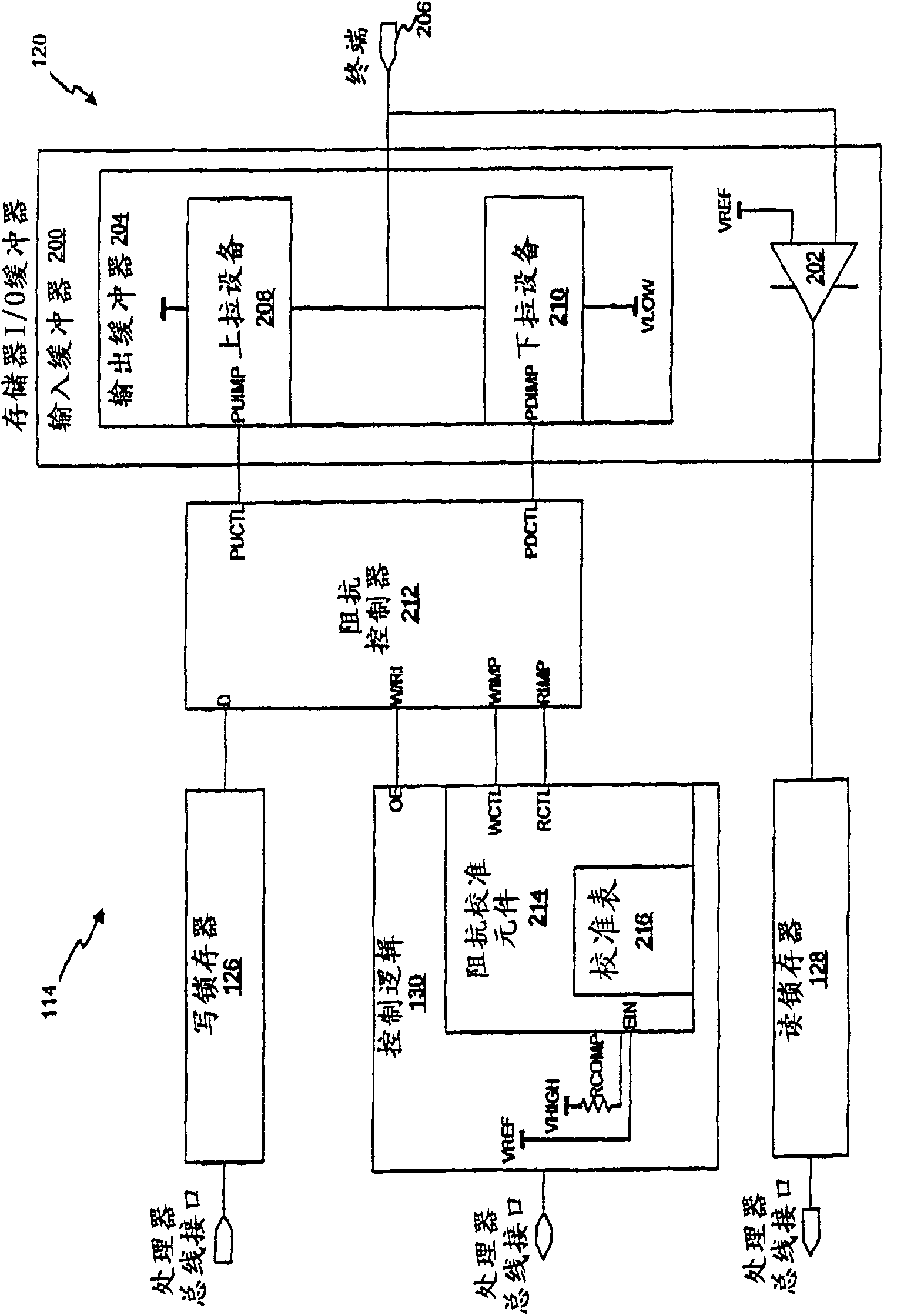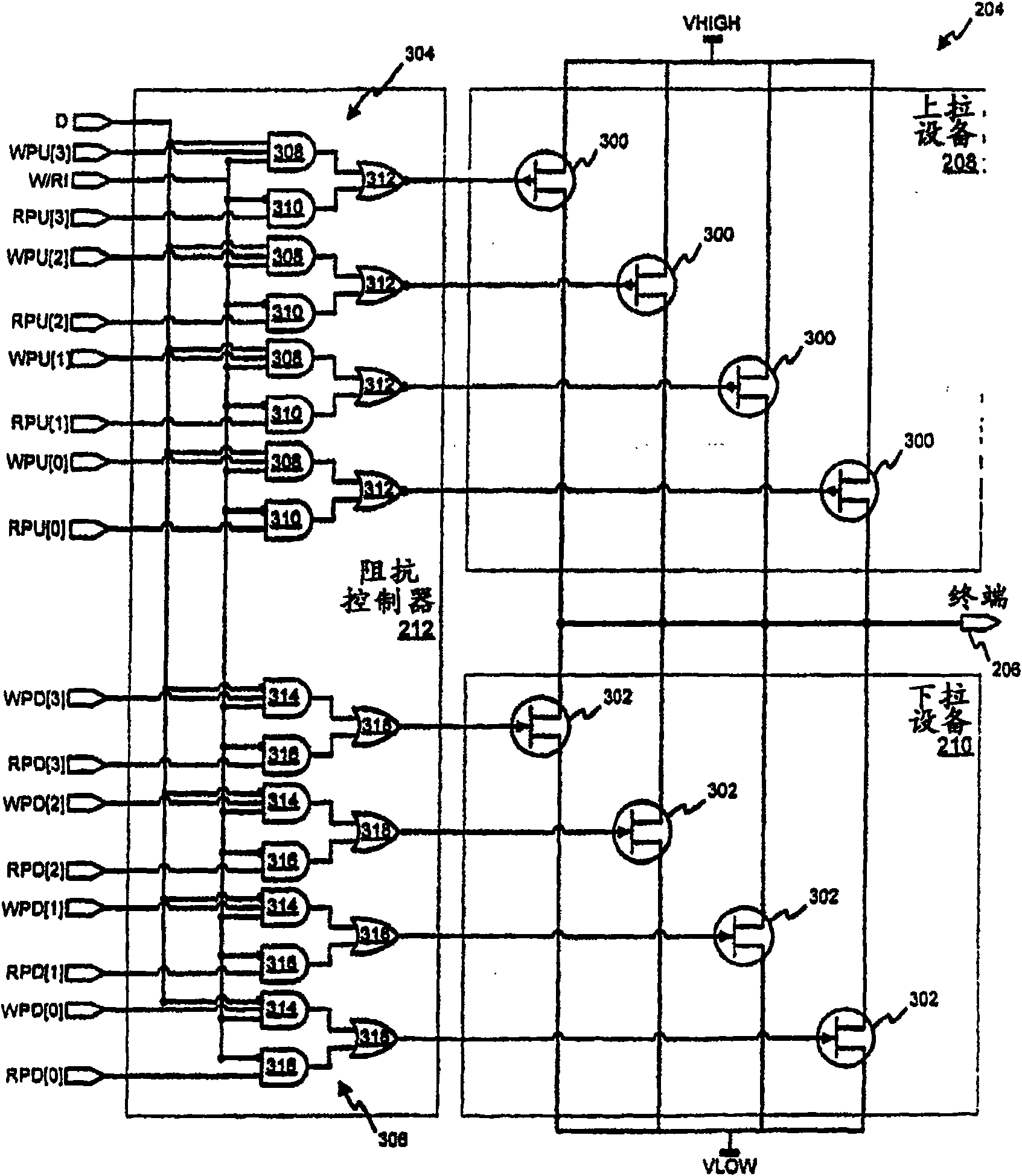Memory bus termination
A memory bus, memory technology, applied in static memory, instruments, electrical digital data processing, etc., can solve the problem of consumption and occupying die area.
- Summary
- Abstract
- Description
- Claims
- Application Information
AI Technical Summary
Problems solved by technology
Method used
Image
Examples
Embodiment Construction
[0029] The following description describes the techniques used to terminate the memory bus. In the description that follows, numerous specific details such as implementation of logic, opcodes, methods of determining operands, implementation of resource partitioning / sharing / duplication, types and interrelationships of system components, and logical partitioning / integration selection are set forth , in order to provide a more comprehensive understanding of the invention. It will be recognized, however, by those skilled in the art that the present invention may be practiced without these specific details. In other instances, control structures, gate level circuits and full software instruction sequences have not been shown in detail in order not to obscure the invention. Those of ordinary skill in the art will be able to implement the appropriate function without undue experimentation from the included description.
[0030] References in the specification to "one embodiment," "...
PUM
 Login to View More
Login to View More Abstract
Description
Claims
Application Information
 Login to View More
Login to View More - R&D
- Intellectual Property
- Life Sciences
- Materials
- Tech Scout
- Unparalleled Data Quality
- Higher Quality Content
- 60% Fewer Hallucinations
Browse by: Latest US Patents, China's latest patents, Technical Efficacy Thesaurus, Application Domain, Technology Topic, Popular Technical Reports.
© 2025 PatSnap. All rights reserved.Legal|Privacy policy|Modern Slavery Act Transparency Statement|Sitemap|About US| Contact US: help@patsnap.com



